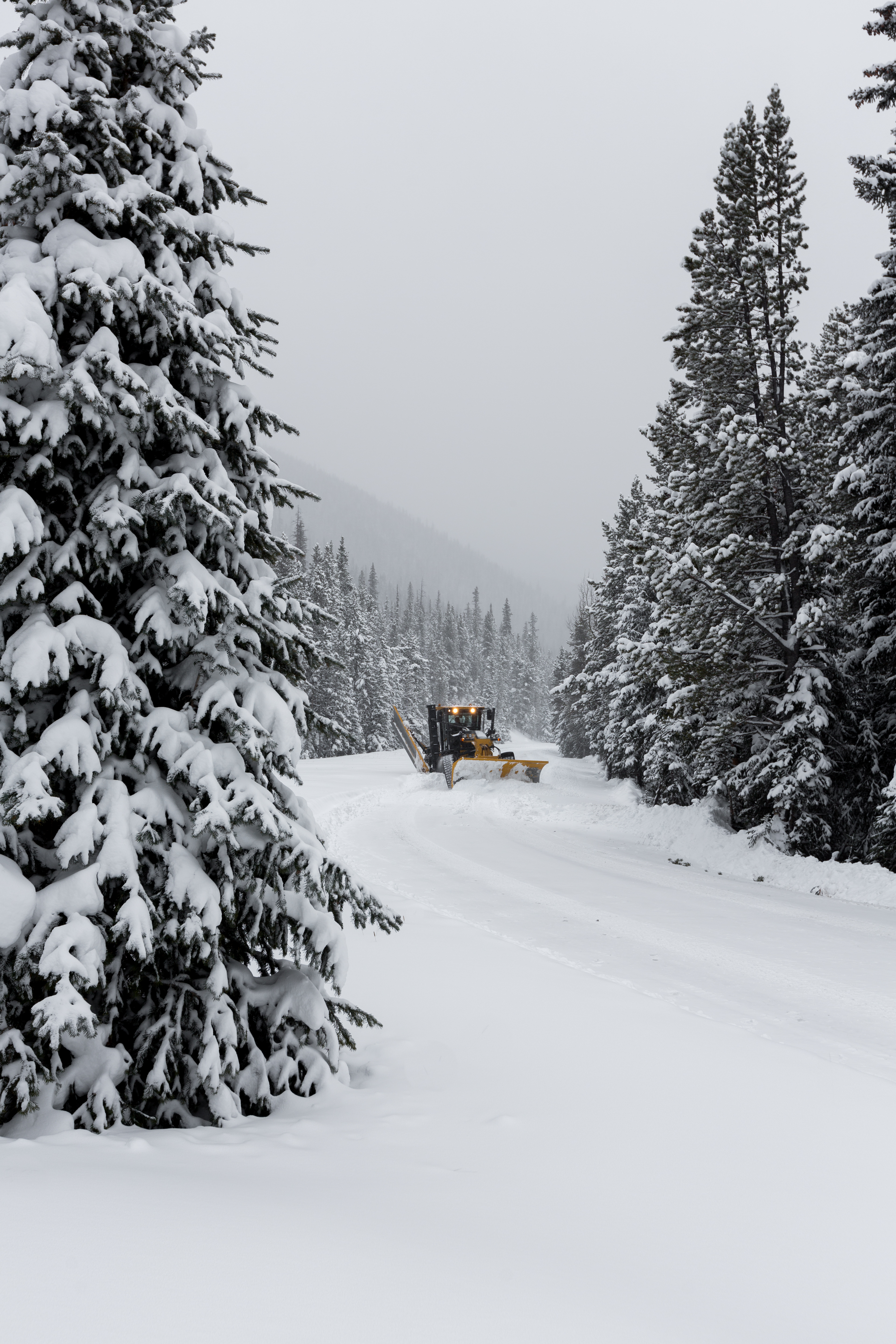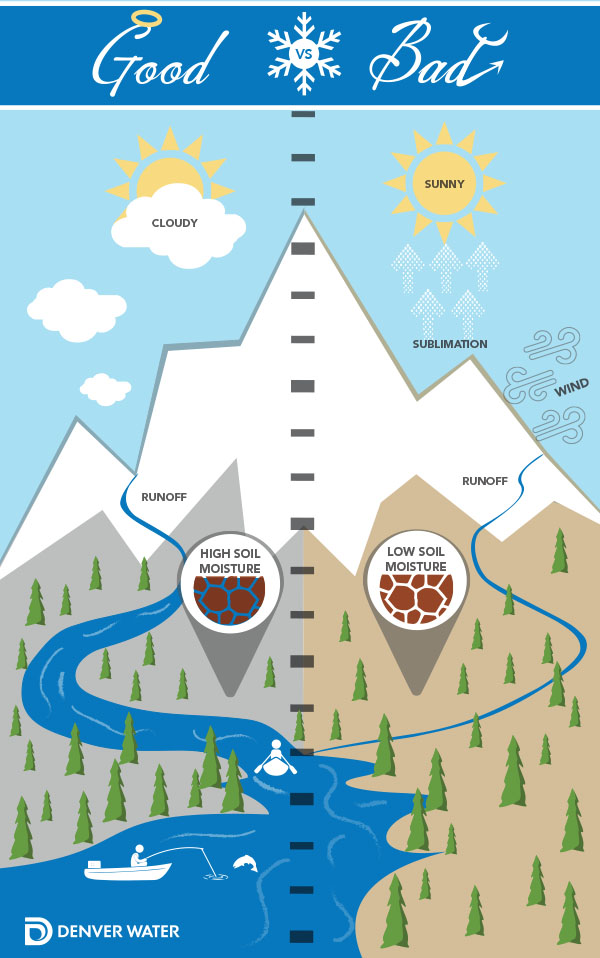
How to tell if we’ve had a good runoff season
We go to special schools to learn about it. We get excited when it makes a comeback. We even go as far as saying we love it!
What is it? Snow!
Most of the Denver area’s water supply comes from mountain snowpack that melts and runs downstream into our system of storage reservoirs. This process is aptly called “runoff.”
Denver Water captures runoff from snowpack in the Upper Colorado River and Upper South Platte River basins. This year, the snowpack there was 100 percent of the normal amount and 108 percent of normal, respectively.
Hurray! This must mean it’s been a good runoff season, right?
Not so fast said Cindy Brady, water resource engineer for Denver Water.
“While it all starts with a solid snowpack season — which we fortunately had this year — there’s much more factored into the equation when determining what it will mean for water supply,” she said.
It starts with the type of snow. Believe it or not, Brady said not all snow is created equal, as this infographic illustrates. (Hint: We prefer the wet stuff.)
Beyond that, weather and environmental conditions play an important part in filling our reservoirs.
Let’s take a closer look at those factors and how they’re affecting snowmelt this year:
Bring on the clouds
As one of the most active outdoor states, it’s not often you’ll hear a Coloradan ask for clouds. But during runoff season that is exactly what we should be doing. The more sun, the more likely the snowpack doesn’t melt, but turns directly into uncollectable vapors — a process called sublimation.
This year, cloudy conditions in the Colorado River basin helped slow down runoff.
“When the water comes pouring down all at once, we have less control,” Brady said. “When runoff is slower, we have more time to react to the conditions and fill reservoirs while coordinating what remains in the rivers for downstream water rights, maintaining a quality fish habitat and recreational flows.”
Blowin’ in the wind
Unless you’re sailing, most outdoor enthusiasts will agree with our feelings about wind: No bueno. Strong, dry winds can blow snow off the mountainside, reducing the amount of snowpack available for runoff.
What about this year? Wind is a factor that water managers really can’t measure, but so far this year wind conditions in our watershed appear to be normal.
Soaked soil
Dry summers and falls from the previous year continue to haunt water planners even when there is a strong snowpack. When we have warm temperatures early in the snowpack season, or if the watershed has recently been under drought conditions, the dry ground absorbs more of the snow before the water ever reaches our reservoirs.
In most of Denver Water’s collection system, runoff started in mid-May. In the Upper South Platte Basin, however, flows didn’t start increasing until the first or second week of June. One potential reason for this delay could have been the warm and dry conditions in that area last summer and fall, causing soil moisture to decrease. Brady said the first few weeks of snowmelt likely went to replenishing this dry soil and didn’t make it to the streams.
Other factors, like dust or warm rains, can cause the snow to melt faster, creating a less-favorable runoff season. Fortunately, neither of these conditions have been an issue this year.
The 2017 outcome
Heading into this runoff season, Brady wondered whether this year’s snow would melt like a snow cone — fast and all at once — or if it would be more like a block of ice: slow and steady.
“I think we ended up somewhere in between,” she said. “Fortunately, this year’s runoff conditions were good, and all of Denver Water’s reservoirs are full, which is the ultimate goal every year.”


